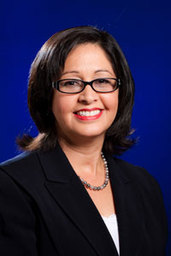This text based course is a transcript of the webinar titled, "An Occupation-Based Approach to Cardiac Rehabilitation", presented by Belkis Landa-Gonzalez, Ed.D., OTR/L on 7/16/2012.
>> Dr. Belkis Landa-Gonzalez: By the end of today’s session, I hope you will be able to recognize the physical and psychological benefits of physical activity, and be able to apprise the precautions and contraindications with any cardiac patient as well as any factors that may influence their adherence to cardiac rehab programs. You should also be able to understand or at least have a basic understanding of the different phases of these programs and be able to use the evidence-based principles that we are going to be discussing into selecting the appropriate activities for cardiac rehabilitation.
Overview of the Heart
Before we can talk about any specific aspects of a cardiac rehab program, we should have a good foundational understanding of the structure of the heart and its related systems. We all know the heart is the key organ in our circulatory system, which primarily propels the blood through the body. It works very hard. We have the heart beating 60 to 100 times per minute, which is equivalent to 100,000 times a day. Structurally, there are four chambers to the heart. We have the atria on the top, right and left, and the ventricles on the bottom, right and left. The ventricles are primarily responsible for pumping the blood out of the heart. We also have the valves, the mitral and tricuspid, which divide the atria from the ventricles. On the right atrium, we have the pacemaker of the heart that establishes the heart rhythm. Each heart beat consists of two phases. We have systole, which is the phase when the heart contracts and sends the blood out into the circulation, and diastole, which is the phase when the ventricles relax and allow the blood to flow from the atria into the ventricles. The blood that gets pumped from the heart will circulate throughout our body.
